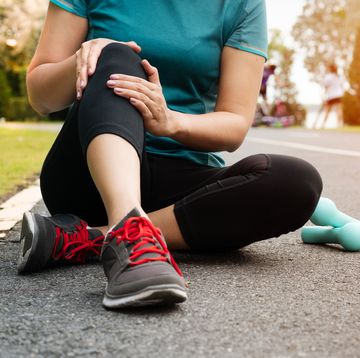There’s a lot to think about – and indeed do – when you’re preparing for a half marathon or marathon, whether you’re completely new to distance races or so familiar with these events that you could pin on a race bib in your sleep. Have you picked a suitable training plan and committed to some all-important strength and conditioning on the side? Are you eating and drinking enough of the right things and practicing your mid-run fuelling strategy? Are you resting as well as running? And so on.
But if your health during race is a concern, here’s something to give you heart: the chance of surviving a cardiac arrest during long-distance races has doubled.
This is the heartwarming finding of a major study published in the Journal of the American Medical Association in May, which analysed the incidence rate and outcomes of cardiac arrests during marathons and half marathons between 2010 and 2023.
What everyone's reading
First looking at incidence rate during this period, researchers found that one in every 166,667 runners (or 0.0006%) is likely to suffer cardiac arrest during a half marathon or marathon. This is roughly level with the incidence rate of the previous period, between 2000 and 2009, even though – as noted by researchers – participation in long-distance running events has actually trebled since then.
Although cardiac risk was low across genders, the study also determined that men were slightly more at risk of cardiac arrest than women. Marathon runners, too, were at greater risk than half marathon runners.
But here’s the better news. In the extremely unlikely event that a runner suffers a cardiac arrest during a half marathon or marathon, the survival rate, according to this study, is now 66%. This is a dramatic improvement on the previous survival rate of 29%, between 2000 to 2009 – but how did this come about?
Race organisers can be praised for their efforts, here. As researchers pointed out, bystander CPR and on-course defibrillators became more widely available at long-distance races 2010 and 2023 – and, when they were applied rapidly in the case of emergency, survival rates rocketed.
We should be upbeat about these findings, because distance racing is getting even safer.
Rick Pearson is the senior editor at Runner’s World UK. He’s been with the brand since 2017 and loves testing PB-friendly shoes for on and off road. Rick is a sub-three marathoner and occasionally likes to remind people of this on the Runner’s World podcast, which he co-hosts. He once raced a steam train over 14 miles (he won, narrowly) and a horse over a marathon (he lost, comfortably).
Rachel is Runner's World UK's Senior Content Writer, covering all running-related topics from training advice and gear reviews to race reports and elite runner profiles. Formerly a Website Content Editor and Content Manager at London Marathon Events and The Running Channel respectively, Rachel is well-versed in the running scene and understands what it takes to put on some of the biggest running events in the world. A 2:50 marathoner, she would much rather run 26.2 miles than race a 5K and has currently completed 11 marathons, including five of the six Abbott World Marathon Majors in a sub-3 time. She now hopes to run the Tokyo Marathon to complete the set and become a Six Star Finisher.













